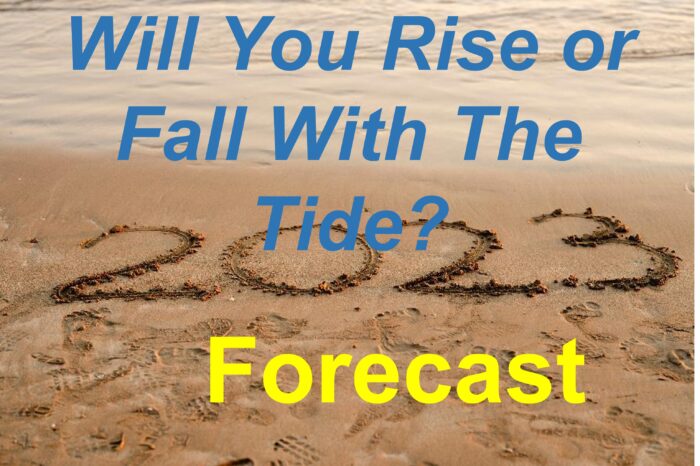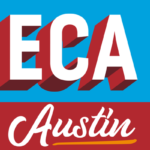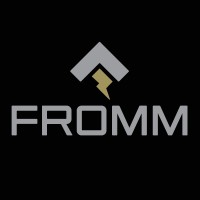Tradeshows … Maximizing Your Return for Sales
 It’s tradeshow season. NECA. Electrical Association of Philadelphia’s Electric Expo. Distributor tradeshow. Lighting agency tradeshows. Being the first fall since COVID started and with everyone wanting more “customer engagement”, there seemingly are more tradeshows this year than ever.
It’s tradeshow season. NECA. Electrical Association of Philadelphia’s Electric Expo. Distributor tradeshow. Lighting agency tradeshows. Being the first fall since COVID started and with everyone wanting more “customer engagement”, there seemingly are more tradeshows this year than ever.
Which also means much time, and money, is being spent in tradeshow preparation and attendance.
Tradeshow investment is much more than the cost of the space. Consider the booth, booth set-up (everything from carpeting to electricity to set-up and union time!), literature, giveaways, transportation, T&E, and more! And TIME. A distributor event which may cost $500-1000 from the distributor is a $5000-20,000 investment. Something like NECA … $15,000 to hundreds of thousands. LightFair investments, for some, all in, have been known to approach high six / low seven figures.
The question becomes, what will the ROI be (other than reconnecting and showing products?)
The ROI question is asked by executive management, marketing management and finance. Why? Because they see the budget and the time investment. Salespeople, on the other hand, either see value in being in front of customers / prospects or complain about the time they have to spend at a booth.
The key in obtaining a verifiable ROI is preparing for, and following through, on follow-up.
This is the place where most companies fail. There is no plan other than “hope” and “trusting” that sales will “do something.”
Greg Nanigian, who is conducting a free sales training workshop today (October 12) on Team Selling / Joint Sales Calls at 11:30 ET, shared some thoughts on generating an ROI from a tradeshow.
Trade Shows — the Five Strikes and How to Avoid Them
To any size business, a trade show represents a large outlay of cash and time. The hope is that the dollars spent on the booth space, the booth itself, transportation, lodging, time out of the field and away from home base will result in a windfall of leads and new business. Sometimes, trade shows will refresh old relationships as well.
The tragedy is how much more effective most companies and salespeople could make trade shows. To that end, here is a list of the top Five Strikes of exhibiting at trade shows and how to avoid them:
- “Fire-Aim-Ready” = No Pre-Show Planning. It’s not only a problem at the show; it’s a problem back at the company office as well — while the show is going on. Can you imagine football plays with no huddles during games? So, let’s change it to Ready-Aim-Fire. I suggest that you plan such things as when the leads will be followed up if it makes sense to do some talks at the trade show and what are the goals of the show in order to gather leads or actually close deals. Get everyone on the same page, and you’ll all work in much better harmony, too.
- Wasting time at the show selling instead of gathering leads. With a few rare exceptions, trade shows should be used to gather leads for telephone follow-up. When people try to sell at shows, they are losing out on far too many prospects to make those few sales worth it. So, get as many leads that have problems, or what I like to call “pain”, that you can fix and call them later.
- Booth set-up like a dry-cleaning drop-off. When you put tables across the front, people can’t get in, rapport is weak, and you set up the ‘buy and sell’ instead of a more disarming naturally free flowing atmosphere. So, make sure the front of your booth is open and encourage people to come in and stay a bit.
- Too many fishbowls and gimmicks. Again, the purpose of a trade show is to find prospects that “have trouble” that your company can fix. It does no good to get the names of everyone who attends — 90% don’t need what a company has — but you sure want to find that other 10%. And if a company collects lots of unqualified leads, it is very discouraging and a big waste of time to follow up on them. People should develop scripts and strategies to screen those that need their products and services from those that don’t. The ones that need your products or services should be the only ones that are collected — I recommend that people get rid of the fishbowls and start qualify for ‘pain’ and with finesse.
- Trade Show leads turning brown like bananas. This tragedy really goes back to planning. Again, because there usually isn’t a plan, trade show leads normally are not followed up on for two to three weeks after the show ends. Of course, by then, they are stale, so salespeople give up after calling just a few. Trade show leads should be called within one to three days of receipt. You might be calling before the show ends. This requires planning, scheduling and teamwork. After all, trade show leads are like bananas — they turn brown in a hurry.
Trade shows can be one of the most effective marketing and selling events. To be successful as possible there is planning, strategy, technique, behaviors, and teamwork involved. Trade shows are a World Series game in sales. Bring yourself the rewards of winning a championship with on-going commitment to overcoming the Six Strikes so you can “hit it out of the park” at future shows!
Reach Greg Nanigian at greg@gnatraining.com or book a call with him at https://calendly.com/book-a-zoom-call-with-a-trainer … and don’t forget to either attend today’s training session or reach out to Greg for a recording of the call.
Takeaways
The biggest miss that I see for most companies is missing on Greg’s #5. Companies have no follow-up strategy. “Leads”, if gathered, and remember, many companies purchase the electronic lead capture systems at tradeshows, are never used.
Before it is too late. Develop a plan to:
- Send a “note” (yes, it can be an email) personally thanking the person for stopping by your booth. Ideally mention something that was of interest to them; worst case remind them of your company and what your offering is with an emphasis on the problems you help them solve (i.e. productivity-oriented / labor saving products, energy-efficiency, software, etc … something unique about your product.) And link to resources.
- Consider a follow-up campaign at intervals to support the sales follow-up process … which, unfortunately but realistically, could take a month.
- Could you have a landing page on your website with more information? If you are a distributor or a rep who held a tradeshow, could you have a show follow-up page populated with manufacturer resources?
- Advise them who their local salesperson / agency is (or is it the customer’s responsibility to determine this?)
- Determine how to quickly disseminate the lead to your salesforce (and your reps need to commit to disseminating it to the right salesperson.) Segment by territory, push them out and have a follow-up process (could be personal, could be formal.)
- And sales management needs to follow-up. A lead could convert to “dead” (really, sometimes there is no opportunity and they were a “tire kicker” or an opportunity (and then rate by timing and size) or, in the rare case, short-term sale. Remember, selling is a process and is dependent upon the customer’s timeframe.
- Follow-up could be conducted by, or supported by, an inside salesperson who is trained in making outbound “cold” calls.
And Marketing needs to drive the process with the HELP of sales. Sales’ role is responding on a timely basis, especially since salespeople will also comment that they have too much to do with existing opportunities / customer service to call on prospects!
If you want an ROI from your tradeshow investment, invest a little time and plan for the follow-through.
And if you are attending NECA or EAP’s Electric Expo and would like to connect, let me know.





















